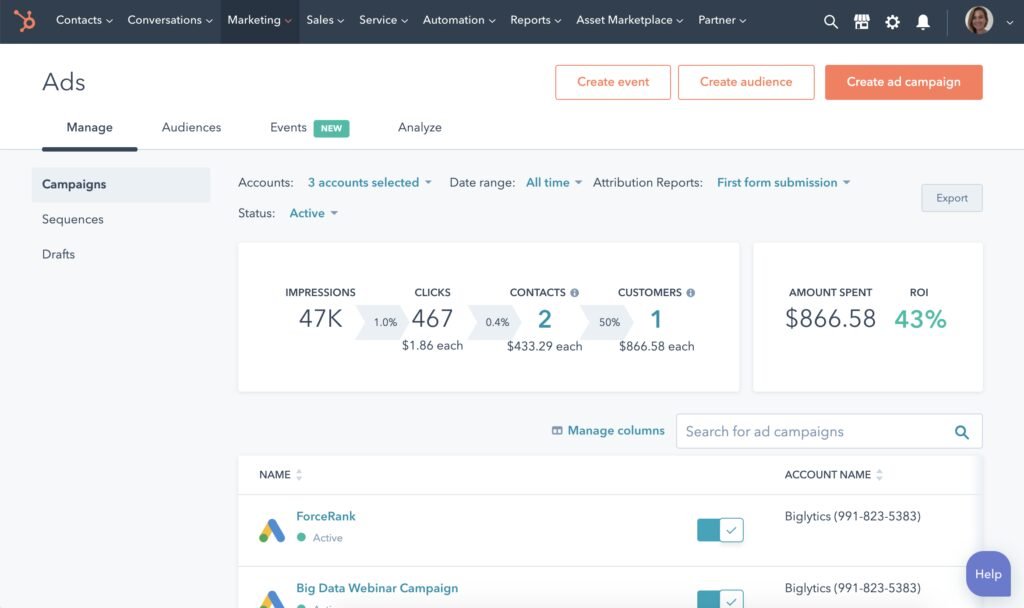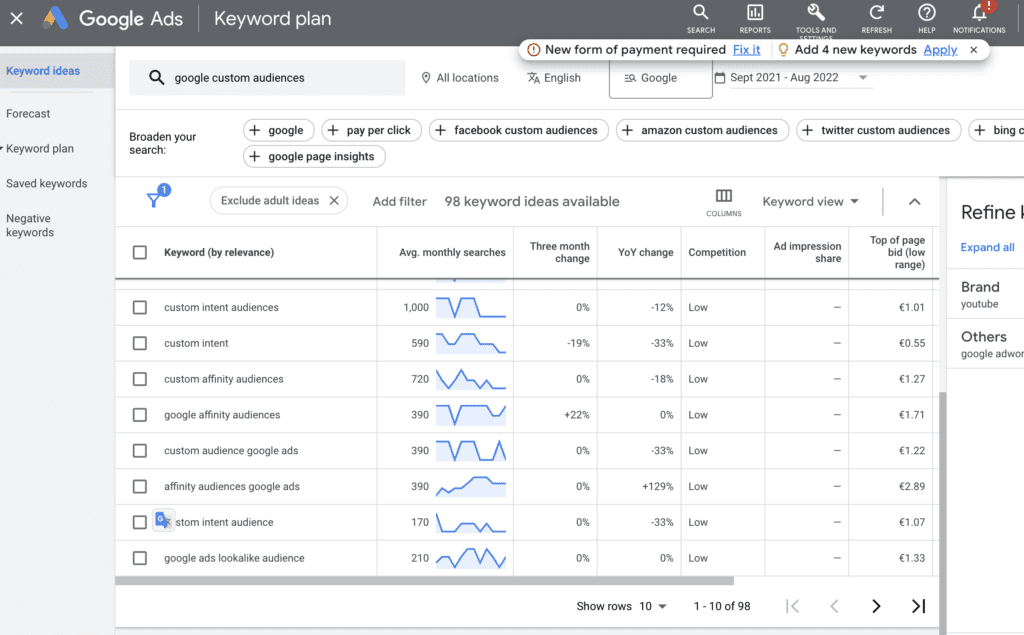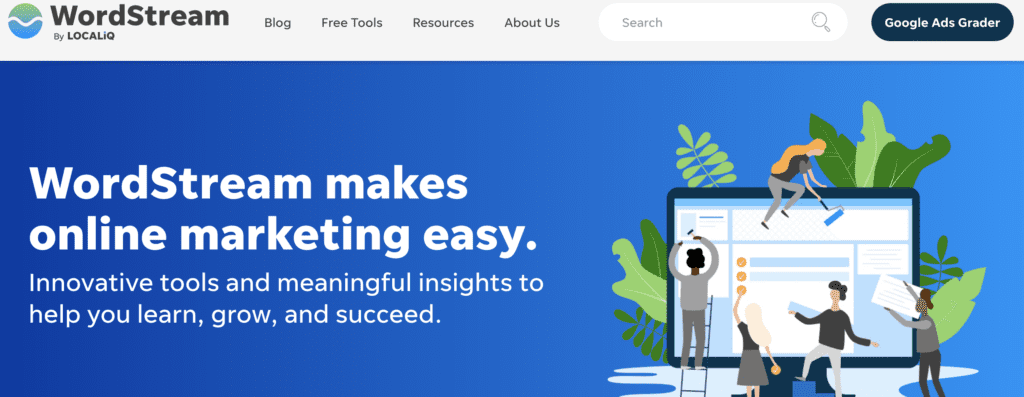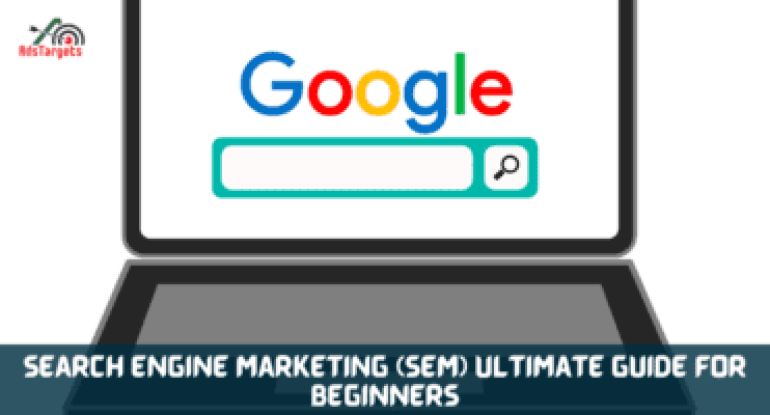When you think of promoting business online, think of Search Engine Marketing, also abbreviated as SEM.
Apparently, it is significant to know that there is an ever-increasing value for achieving maximum search engine results when an essential guide to search engine marketing is applied.
On average, Google has over 89 billion visits per month which is a clear show of how effectively you can grow your business and reach out to new customers.
This, therefore, means search engine marketing is one of the key tools for digital marketing. However, the question now is, how can you build an effective campaign to attract traffic, and will this be achievable in a long term?
This article therefore will guide you through the key terms and tools of Search Engine Marketing as well as the basic step-by-step strategy for creating your first successful campaign. Let’s get started
Table of Contents
Toggle#1. What is Search Engine Marketing? (SEM)
Search engine marketing is an internet marketing tool that helps you to increase your paid advertising visibility in search engines and also gain website traffic and exposure.
Search engine marketing (SEM) allows you to pay for search ads to advertise at the top of a search engine results page (SERP) for definite keywords as well as search phrases.
One prominent recognition search engine marketing earn is the opportunity advertisers enjoyed when it comes to placing their ads in front of many interested users that are able and ready to make a purchase.
That is not to say, not many other advertising platforms can do so, and as such search engine marketing becomes one of the major online marketing tools to raise your business.
However, there is more to be done in order to achieve this, ensure you’re able to use a list of the best SEM tools, and other SEM-related components for Ad Auction.
Just like any marketing strategy, SEM requires a lot of careful organization and planning in order to get optimal results.
Most importantly, consider the different aspects of SEM, and ensure you come up with the best strategy putting into consideration the following:
- The type of search keywords you will target
- Always use keywords that will receive enough traffic and must be relevant to your business.
- Make sure you understand your competitors whether they have already ranked for or advertised for those same keywords
- Ensure the target and used keywords align with your products or services
- What do you have to offer to make you stand out from the competition
#2. How an Ad Auction Works
Every search engine marketing has to pass through an Ad auction which is predominantly controlled by Google Ads.
This is to say, in every Google ad you find out there, such ads have passed through an ad auction before appearing in the SERPs. For clarity, there are five (5) basic factors in the ad auction that determine which ads appear and how.
To enter into an ad auction, you’ll first need to identify the keywords you want to bid on and clarify how much you’re willing to spend per click on each of those keywords.
- Your bid: Firstly, bidding here means you’re telling Google Ads the maximum amount an advertiser is ready to pay for a click on your ad. However, how much you end up paying may be less than the initial bid you set and this bid can as well be changed when you so wish.
- The quality of your ads. Google manages your ads to wear a new look with an amazing display. This will go a long way to speak well of your ads to the websites you are linked to. The quality of your ad is summarized using Quality Score and with this, you can monitor and also work on improving your Google Ads account.
- The expected impact from your ad extensions and other ad formats: Using Google ads, you can create your ad with options to add additional information to your ads, such as phone numbers, and more links to specific pages on your site. The additions are called ad extensions.
Google Ads performs an evaluation of how extensions and other ad formats when used will have an impact on your ad’s performance. Though, even if your competitors have higher bids, you can still win a higher position at a lower price by using highly relevant keywords, ads, and extensions.
- Your Ad Rank: To ensure high-quality ads, set minimum quality thresholds that an ad must achieve and this will show in a particular ad position.
- The context of your ad: Context becomes key when using an ad auction. When calculating Ad Rank, we look at the search terms the person has entered, the person’s location at the time of the search, the type of device they’re using (for example, mobile or desktop), the time of the search, the nature of the search terms, other ads and search results that show on the page, and other user signals and attributes.
#3. SEM Strategy
When you talk of SEM strategy, you are referring to the best approach taken in optimizing paid search ads. Though, this can be achieved only by understanding how paid ads platforms work.
Creating a good strategy is another factor, this has to do with effective management of the necessary variables that will have an impact on the performance such as keywords, budget, etc.
Going by this, here are some of the factors that should go into your strategy if you want to earn paid ads success:
Keyword Intent
Pay-per-click (PPC) ads are the basis of search engine marketing. Here, you pay to rank for specific keywords or search queries and this payment is for every click on your ad.
PPC is indeed considered by many to be one of the parameters to evaluate the success of their business and as such PPC and search marketing are decisive elements of any high-level marketing strategy.
The concept of SEM and PPC are used interchangeably by many search engine marketers, though, many see SEM as encompassing discipline that includes organic SEO, and PPC.
However, the scope of PPC ads goes beyond search engines to other mediums like YouTube or display ads. Social media ads also form part of PPC since it’s only an advertising method where you pay for a specific interaction like a click, landing page view, or other engagement.
Other notable metrics worth mentioning are cost-per-click (CPC) and cost-per-mille (CPM), the cost per thousand views. Here, most platforms charge your PPC campaigns based on these metrics.
As performance-based channels, PPC and SEM are some of the most cost-effective ways to advertise your business.
Keyword Volume and Competition
Keywords are relevant and have a positive bearing on your brand only if people search for them. Note that keywords with extremely high volume call for more competition.
However, if no one searches for your target keywords, consider not getting any results from your ads.
In an event of doing keyword research, relevant high-volume and low-competition keywords are a sweet spot, though, it is not easy to locate them as many thought. With this, it becomes a necessity to balance demand (volume) and budget (competition).
Keyword Cost
Google has an indicator that is used to score ads, the scores could be high or low depending on the bidding and the quality of such ads while Ad placement is determined by the bid you specify for the keyword and the quality score Google has given your ad.
This means that higher bids and higher-quality ads win the best placement. This explains how competitive keywords are, and as such end up being more expensive.
When you bid very low, your ad stands a chance of not being seen or shown. Therefore ensure that you can be competitive based on how much competition is for the keyword.
There are several levels for Google Ads campaign organization:
- Ad – The copy that’s displayed for the keywords you’ve chosen
- Keywords – The queries you’re bidding on
- Ad Group – Sets of like keywords grouped by theme
- Campaign – High level for managing ad groups
When you duly followed each level, as shown above, you’ll know what’s working and not working, thereby giving you a better understanding of performance and how your money is being spent.
Copy
After selecting your keywords, then your account is structured. At this point, you need to write good ads and “earn” the click.
An ad is made up of a few components which include:
- Title – Blogging for Business
- Display URL – www.hubspot.com
- Description 1 – Use blogging to get more leads
- Description 2 – Download the Science of Blogging
The basis here is that, try so much to understand what the searchers are looking for with their queries, this will guide you best to write a great ad that makes your offer attractive.
Don’t forget that SEM is an ongoing activity, which is why ongoing PPC management helps you to avoid budget waste, experiment with ads, and optimize keywords you’re bidding for to ensure that you’re getting the most ROI from your efforts.
#5. What are the best SEM Tools?
SEM is one of the digital marketing approaches just like Google AdWords which was launched in 2000.
The following therefore are many great tools that will help you with keyword research and ad writing:
1. HubSpot’s Ad Tracking Software
2. SEMrush
3. Google Trends
4. Keywordtool.Io
5. Google Ads Keyword Planner
6. WordStream
HubSpot’s Ad Tracking Software
The crux of every business paying for ads is to generate leads and as well drive revenue in the end. This is to say, it pays to do business and this is not a joke.
The HubSpot Ads tools are essential since they help you to achieve even more than traffic and click metrics. With this, you can analyze exactly how ads are influencing contacts and where they are in the buyer’s journey.
More interestingly, you can easily understand and interpret which ads actually work using search engine marketing as a tool, you can then garnish your advertising with your innovative and amazing concepts.

SEMRush
SEMrush is a popular SEO tool that specializes in keyword research. It allows a thorough search for keyword research, keyword rank tracking, site audits, traffic analysis, and lots more.
SEMRush is a popular SEO tool, the tool indeed has some amazing features that will help in finding opportunities to rank for long-tail keywords organically, though the tool can also be used for other SEM-related purposes.
An interesting area of note is that you can use SEMRush to figure out where the concentration of competitors lies, with this, you can analyze and possibly come out with plans on how much to commit to some keywords.
Undoubtedly, SEMRush helps you greatly to discover your main paid search competitors with emphasis to know which keywords they’re bidding on, and study the composition of their ads. The idea here is key especially when you are going into paid strategy with the zeal to outrank other businesses on the SERPs.

Google Trends
Google Trends lets you the opportunity to track the search volume for a specific keyword given consideration in a specific region, language, or time frame. However, this will enable you to identify which search terms are trending, and which ones are not.
The tool is indeed useful since it guides you not to invest money into keywords that are not gaining popularity but rather to stay awake with the trending keywords.
As an eCommerce business, your ability to measure interest in your product or service in a particular geographical location is in no doubt a great tool for ensuring you put in your paid efforts to specific locations thereby saving you money in the long run.

Keywordtool.io
Keywordtool.io is the most helpful tool with amazing features that allow you to bang into Google, Bing, YouTube, Amazon, Instagram, Twitter, and the App Store. The essence is for you to be able to segment your keyword research using different channels.
More importantly, this tool takes your base keyword and offers you different words and phrases, which allows you to develop a more all-encompassing list of possible keywords you might want to include in a paid ad.
Also note that Google Autocomplete help provide relevant keywords for you, the free version of Keywordtool.Io allows you to generate over 750 long-tail keywords with keyword suggestions for every search term.
In addition, you can use the tool to analyze search trends on Google, to ensure your desired keywords are increasing in popularity and will continue to serve you well over the long term.

Google Ads Keyword Planner
Google is where your ads will finally appear and it becomes necessary if you use Google Ads Keyword Planner to research relevant keywords for your business, and also keep tabs on how searches for certain keywords change over time.
Here, the Keyword Planner tool will help you narrow down a list of possible keywords to ensure you’re selecting the most effective ones for your business.
Furthermore, Keyword Planner will give you suggested bid estimates for each keyword, you can now decide which keywords work most with your advertising budget. The good news is that, once you’ve found your ideal keywords and are ready to launch an ad campaign, you can do it all from within the tool.

WordStream
WordStream is one of the SEM tools whose primary role is advertising management solution that can help you research, measure, and optimize your ads for performance.
More notably, you can get access to advanced reporting features for data analysis and tools for creating great ads. In addition, WordStream has alerts and workflow tools to help you make decisions about your campaigns.

Conclusion
As the saying goes, nothing good comes easy, the same phrase is applicable to the marketing activities related to SEM. The good thing is that SEM is one of the most effective ways to boost your company’s exposure.
For positive results, ensure to integrate flawless PPC and SEO into an overall search marketing strategy.
Though it is indeed a hard pill to swallow as a beginner, however, the application of the above tools using killer strategy, SEM can be a great strategy for lead generation. There’s no reason why you shouldn’t start your PPC campaign today.








